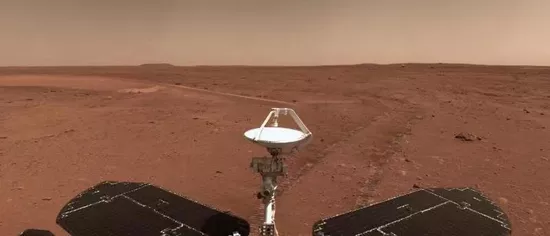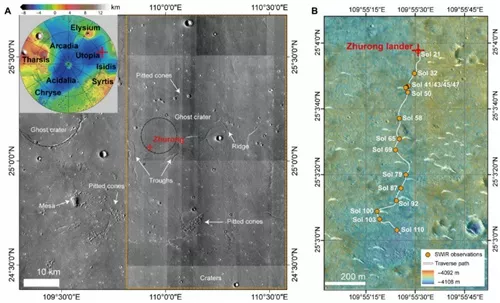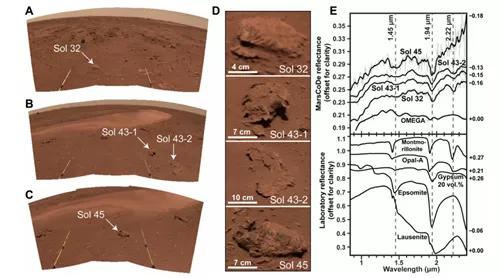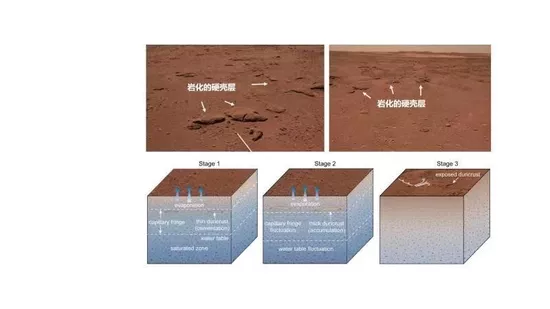China's Mars exploration mission tianwen-1 Zhurong rover, recently in the southern region of the Martian Utopia plain, realized the first time to use the short wave infrared spectrometer on the patrol to detect water bearing minerals in situ on Mars, and found signs of recent water activities in the landing area The rover landed in the Utopia plain of Mars. Through short wave infrared spectroscopy and navigation and Terrain Camera data, it found a plate-like hard crust similar to sedimentary rocks, rich in minerals such as hydrous sulfate.

Liu Yang research team of the State Key Laboratory of space weather, National Center for Space Sciences, Chinese Academy of Sciences concluded that this may be salt minerals crystallized by groundwater overflow or capillary evaporation, cemented Martian soil and formed by diagenesis, revealing signs of water activity in the landing area in the near future.


The zhurong Mars rover carried by China's first Mars exploration mission tianwen-1 successfully landed in the southern area of Utopia plain on May 15, 2021, leaving a Chinese mark on the surface of Mars for the first time. Up to now, the Mars rover zhurong has been traveling in the utopian plain in the northern lowlands of Mars for one year, with a total of nearly 2000 meters, and has obtained a large number of valuable scientific exploration data.

The landing area of the Mars rover zhurong is located on the young Amazon stratum that has experienced the reconstruction event. Existing studies believe that the climate of Mars during the Amazon period was cold and dry, and the range and degree of liquid water activity were extremely limited. The discovery of the zhurong Rover suggests that water activities on Mars during the Amazon period may be more active than previously thought. The zhurong landing area (and the extensive area of the northern plain of Mars) may contain a large amount of available water in the form of aqueous minerals, which can be used as in-situ resources for manned Mars exploration in the future. This discovery is of great significance for understanding the evolution history of Martian climate and environment. This research achievement was published in the international authoritative academic journal progress of science on May 11.
(CCTV reporter Zhang Xin)